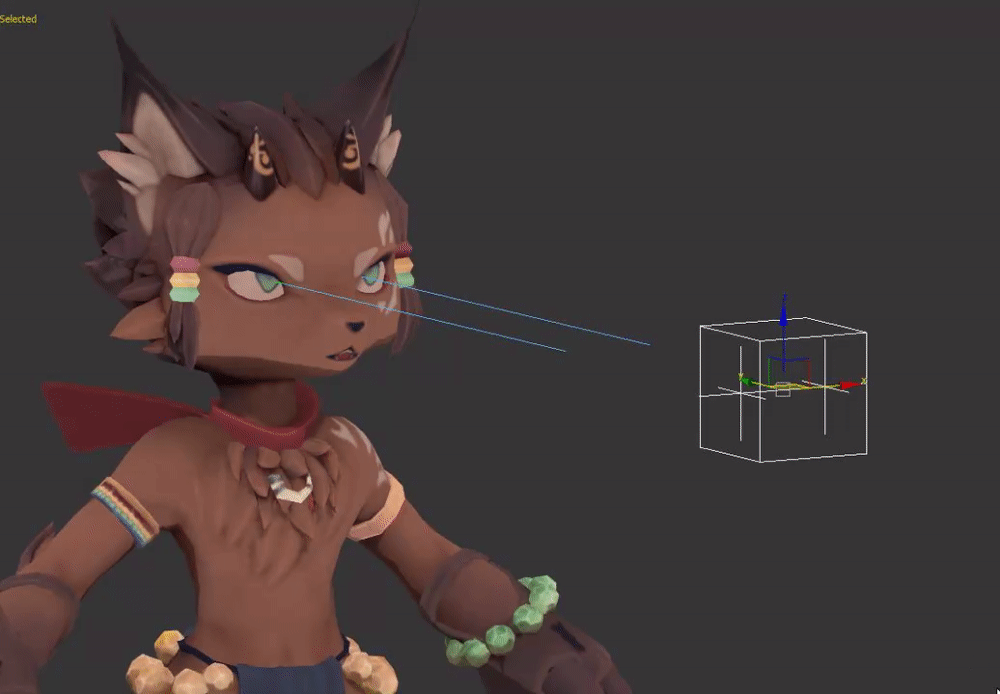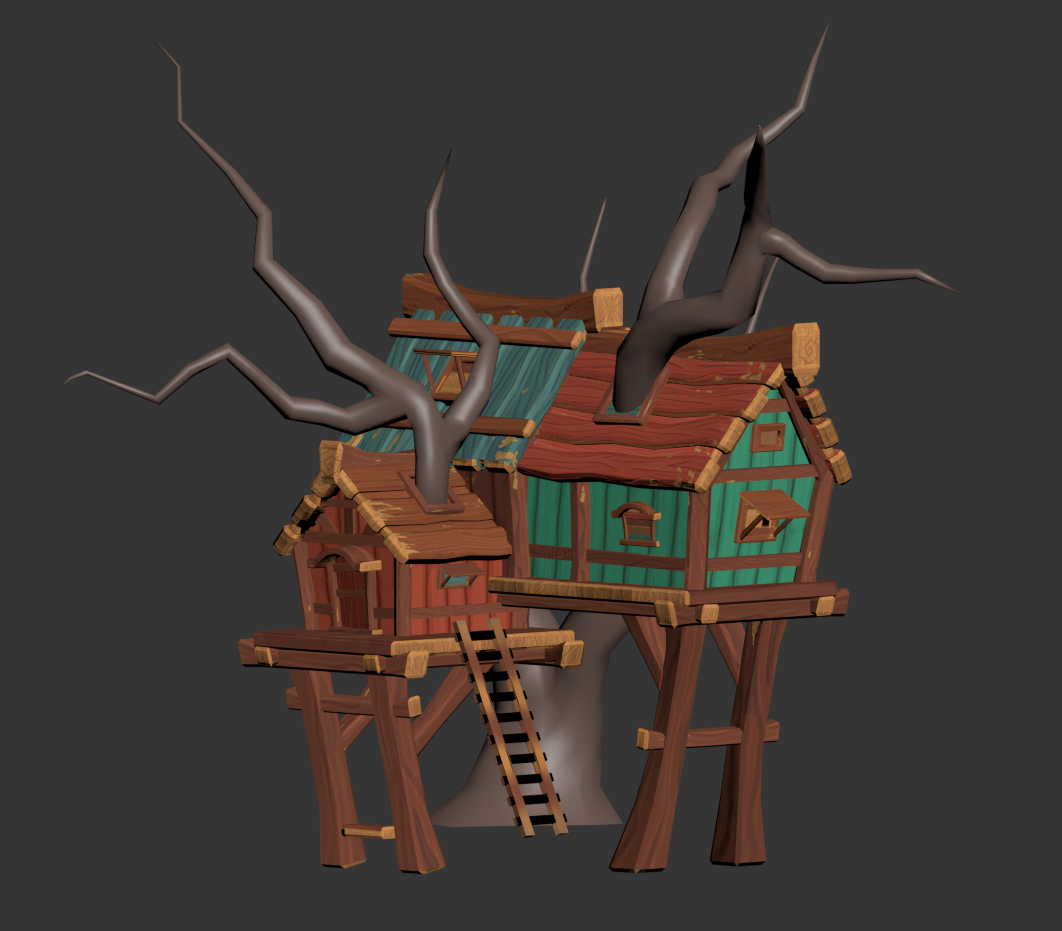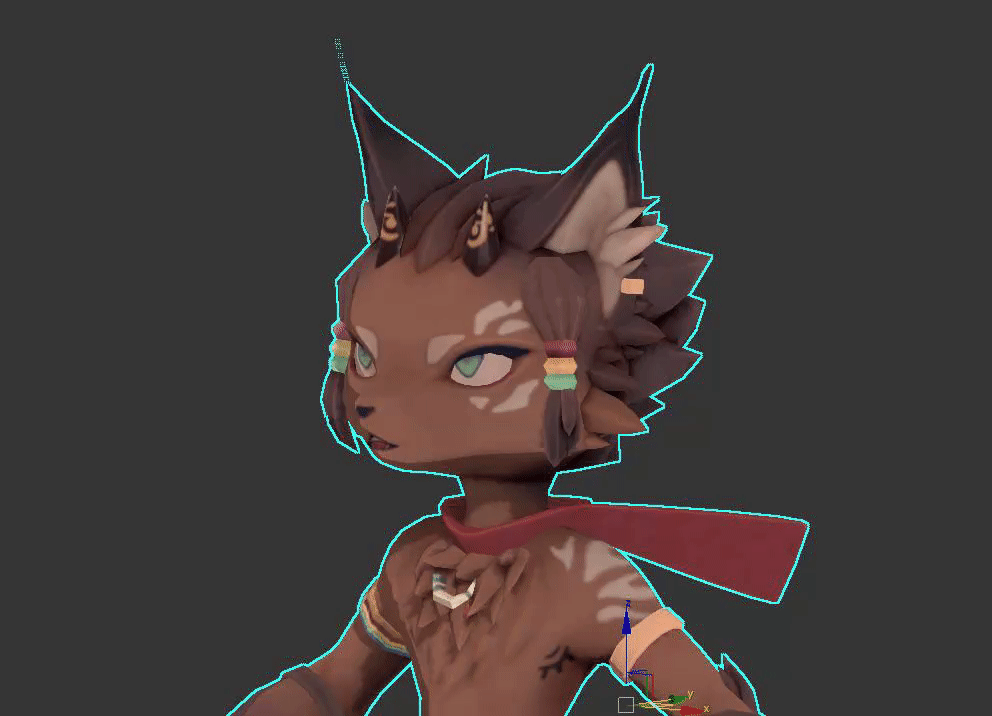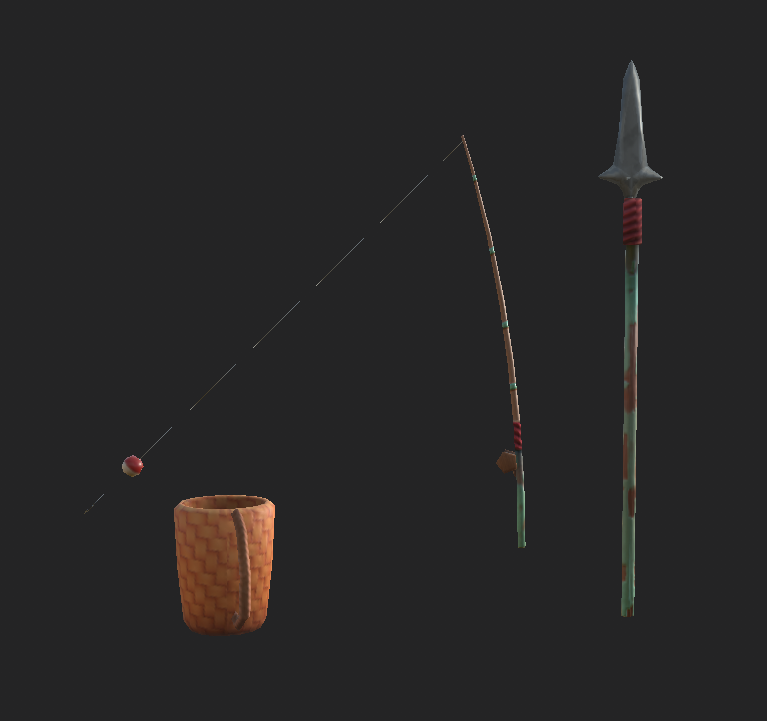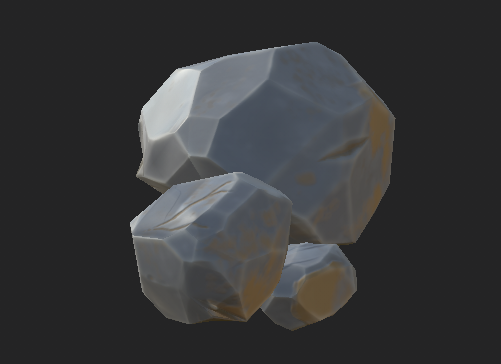On Friday, I continued with the character's rig. This time, I decided to rig the eyes so that they could move independently and together as one, separate from the body rig. I had to keep the eyes seperate from the rest of the mesh to achieve this so that I could follow this tutorial and attach helpers to the eyes, linking the eyes to points and then using a LookAt Constraint directed at a dummy for each eye, then attaching those to a parent dummy.
I then moved back to applying the trim sheets and tileable textures to the treehouse:
Showing posts with label Week 8. Show all posts
Showing posts with label Week 8. Show all posts
Friday, February 28, 2020
Thursday, February 27, 2020
FMP: Week 8 Thursday
On Thursday, I began working on the animations for the character. I wanted him to have facial expressions, so I decided to create some morphers following this tutorial.
I duplicated the character mesh several times, slightly moving verts around the eyes and mouth to simulate blinking, the mouth opening and closing, as well as a slight furrow of the eyebrows to express anger. I originally used 3ds max's progressive morphing, but later removed it after finding out that it wasn't actually supported by ue4 yet.
I then animated them in different chunks of the animation timeline so that they would be easier to separate later. I made sure to filter out everything other than modifiers in the animation key settings so that the morphers would be the only thing recorded.
I then animated them in different chunks of the animation timeline so that they would be easier to separate later. I made sure to filter out everything other than modifiers in the animation key settings so that the morphers would be the only thing recorded.
Wednesday, February 26, 2020
FMP: Week 8 Wednesday
On wednesday, I reduced the topology following the crit from lecturers mentioned previously. I then created a bipedal skeleton and started rigging, using the copy/paste function where applicable:
 |
| (helpers and clones were added later) |
 |
| I limited the hand links to 2 to keep them simple, and added horselinks to the legs to replicate the animal anatomy. |
Tuesday, February 25, 2020
FMP: Week 8 Tuesday
On Tuesday, I placed my tileable plank texture that I had baked in marmoset into substance designer to generate AO and curvature maps based off of the normal to height map node. I did the
Is so that the maps would match the ones I generated using the same method for my trim sheet, which was created using substance designer because I was editing and combining the normal map in photoshop and couldn’t use the additional maps generated by marmoset, as they wouldn’t line up.
I created a smart material out of all of the layers used for my trim sheet, then applied it to my tileable plank texture so that I would have a similar style and colour for the both of them. I then made some tweaks to the colours following the concept, and made tweaks to the grunge/paint wear layers.
To preview the texture, I created a plane in 3ds max and doubled the size of the plane UV, covering a quarter of the overall space. This was so that the texture would tile four times in substance painter, allowing me to see each of the seams properly while painting.
Is so that the maps would match the ones I generated using the same method for my trim sheet, which was created using substance designer because I was editing and combining the normal map in photoshop and couldn’t use the additional maps generated by marmoset, as they wouldn’t line up.
I created a smart material out of all of the layers used for my trim sheet, then applied it to my tileable plank texture so that I would have a similar style and colour for the both of them. I then made some tweaks to the colours following the concept, and made tweaks to the grunge/paint wear layers.
To preview the texture, I created a plane in 3ds max and doubled the size of the plane UV, covering a quarter of the overall space. This was so that the texture would tile four times in substance painter, allowing me to see each of the seams properly while painting.
Monday, February 24, 2020
FMP: Week 8 Monday
On Monday I had another presentation updating the lecturers on my work. I received feedback that I should further optimise my topology by deleting loops in areas that don’t need them, even if it results in having rectangles (as those areas wont be deforming).
When I got back, I started working further on my item textures. On the spear I added paint wear in areas where the character would be holding it, using the same cloud, blur and histogram method mentioned previously, with the addition of a gradient to add interest. I used this same method on the fishing rod to add a pop of colour to the base, and used a fiber mask on the both of them to create the height for a rope wrapped around both assets. I then painted in marks going up the fishing rod to suggest the location of where the fishing line would be threaded through, leading back to the bobbin, without actually painting the hooks or fishing line in, as there was no reasonable place to paint those details on the mesh.
I made some tweaks to the tree texture by scaling the textures in places and repositioning some of the grain, then added curvature, ground up gradients and ao generators to add additional colour variation. I also used the gradient and a histogram filter to create the effect of moss and greenery around the base of the trunk.
For the starfish, I didn’t want to spend too much effort on such a tiny asset in terms of height or normal maps, so I avoided sculpting it. Instead, I painted a few small bumps in height, then added a salmony pink fill layer with roughness. After this, I added curvature and ao gradients to increase the visual impact a little further.
The shell was textured using height and colour on strips laid diagonally across the shell, using the same curvature and ao techniques mentioned previously.
For the rocks, I added a simple fill layer, curvature and AO for detail, and then the cloud, blur and histogram technique to create sand stains with slightly increased height and roughness on max.
When I got back, I started working further on my item textures. On the spear I added paint wear in areas where the character would be holding it, using the same cloud, blur and histogram method mentioned previously, with the addition of a gradient to add interest. I used this same method on the fishing rod to add a pop of colour to the base, and used a fiber mask on the both of them to create the height for a rope wrapped around both assets. I then painted in marks going up the fishing rod to suggest the location of where the fishing line would be threaded through, leading back to the bobbin, without actually painting the hooks or fishing line in, as there was no reasonable place to paint those details on the mesh.
I made some tweaks to the tree texture by scaling the textures in places and repositioning some of the grain, then added curvature, ground up gradients and ao generators to add additional colour variation. I also used the gradient and a histogram filter to create the effect of moss and greenery around the base of the trunk.
For the starfish, I didn’t want to spend too much effort on such a tiny asset in terms of height or normal maps, so I avoided sculpting it. Instead, I painted a few small bumps in height, then added a salmony pink fill layer with roughness. After this, I added curvature and ao gradients to increase the visual impact a little further.
The shell was textured using height and colour on strips laid diagonally across the shell, using the same curvature and ao techniques mentioned previously.
For the rocks, I added a simple fill layer, curvature and AO for detail, and then the cloud, blur and histogram technique to create sand stains with slightly increased height and roughness on max.
Subscribe to:
Posts (Atom)
